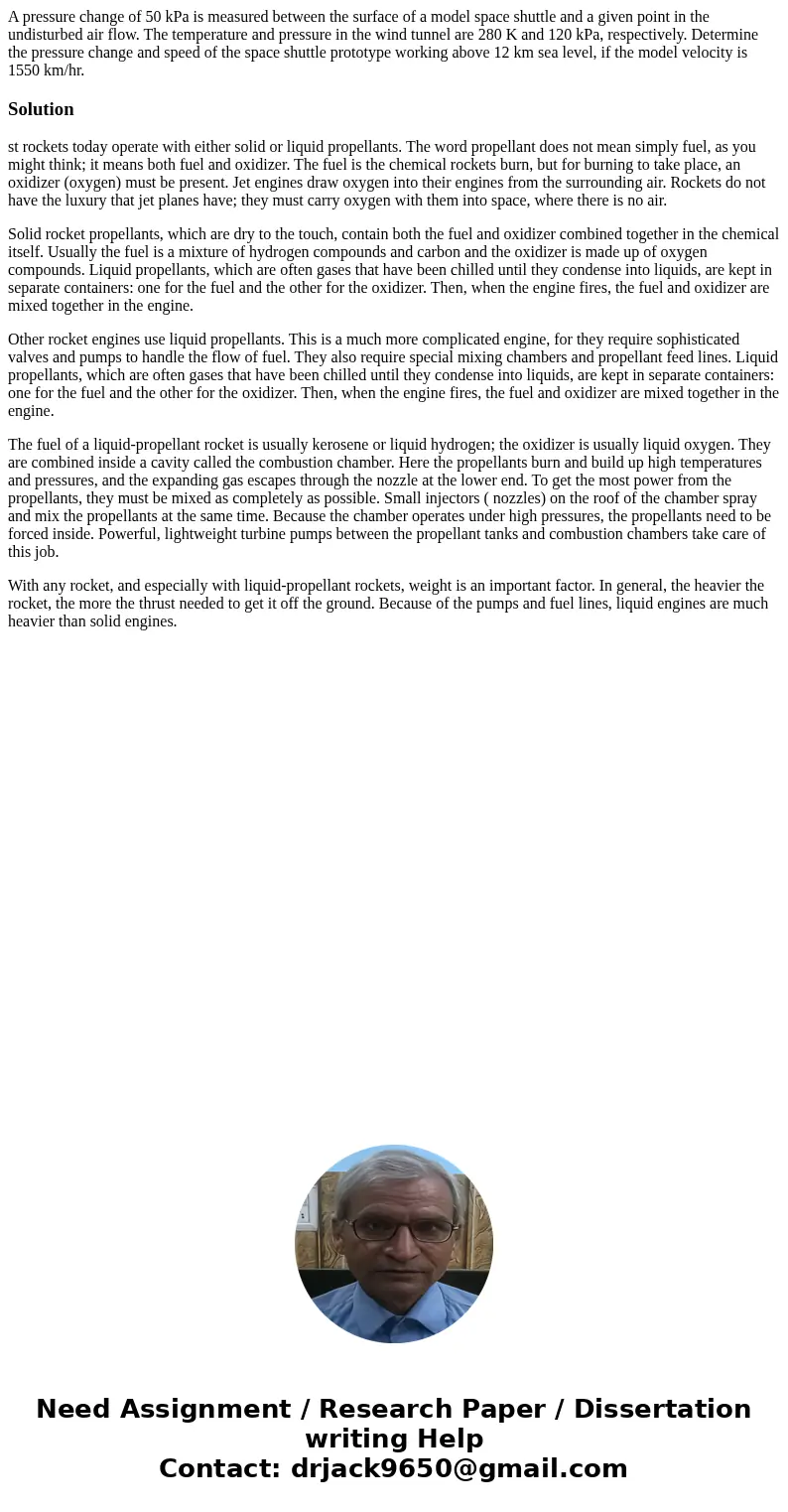A pressure change of 50 kPa is measured between the surface
A pressure change of 50 kPa is measured between the surface of a model space shuttle and a given point in the undisturbed air flow. The temperature and pressure in the wind tunnel are 280 K and 120 kPa, respectively. Determine the pressure change and speed of the space shuttle prototype working above 12 km sea level, if the model velocity is 1550 km/hr.
Solution
st rockets today operate with either solid or liquid propellants. The word propellant does not mean simply fuel, as you might think; it means both fuel and oxidizer. The fuel is the chemical rockets burn, but for burning to take place, an oxidizer (oxygen) must be present. Jet engines draw oxygen into their engines from the surrounding air. Rockets do not have the luxury that jet planes have; they must carry oxygen with them into space, where there is no air.
Solid rocket propellants, which are dry to the touch, contain both the fuel and oxidizer combined together in the chemical itself. Usually the fuel is a mixture of hydrogen compounds and carbon and the oxidizer is made up of oxygen compounds. Liquid propellants, which are often gases that have been chilled until they condense into liquids, are kept in separate containers: one for the fuel and the other for the oxidizer. Then, when the engine fires, the fuel and oxidizer are mixed together in the engine.
Other rocket engines use liquid propellants. This is a much more complicated engine, for they require sophisticated valves and pumps to handle the flow of fuel. They also require special mixing chambers and propellant feed lines. Liquid propellants, which are often gases that have been chilled until they condense into liquids, are kept in separate containers: one for the fuel and the other for the oxidizer. Then, when the engine fires, the fuel and oxidizer are mixed together in the engine.
The fuel of a liquid-propellant rocket is usually kerosene or liquid hydrogen; the oxidizer is usually liquid oxygen. They are combined inside a cavity called the combustion chamber. Here the propellants burn and build up high temperatures and pressures, and the expanding gas escapes through the nozzle at the lower end. To get the most power from the propellants, they must be mixed as completely as possible. Small injectors ( nozzles) on the roof of the chamber spray and mix the propellants at the same time. Because the chamber operates under high pressures, the propellants need to be forced inside. Powerful, lightweight turbine pumps between the propellant tanks and combustion chambers take care of this job.
With any rocket, and especially with liquid-propellant rockets, weight is an important factor. In general, the heavier the rocket, the more the thrust needed to get it off the ground. Because of the pumps and fuel lines, liquid engines are much heavier than solid engines.

 Homework Sourse
Homework Sourse